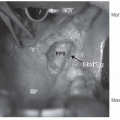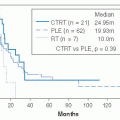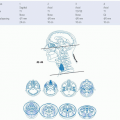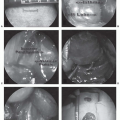Radiologic Imaging Concerns
Jeffrey A. Bennett
Almost all varieties of sarcoma occur in the head and neck, and virtually all warrant imaging prior to treatment. When the tumor is small, the site of origin can often be determined, such as bone or muscle, which can help predict the pathology, but biopsy will nevertheless be required. Fine-needle aspiration is often inadequate for diagnosis, thus a core biopsy or open biopsy may be required. When an image-guided core biopsy is performed, the needle tract should be documented, as well as the skin entry site, as there is the potential for seeding of tumor and the surgeon may elect to resect the tract.
As with all tumors of the head and neck, the goal of imaging is to reveal the full extent of local disease, the presence of cervical lymphadenopathy, and the presence of distant metastases, so that an optimal treatment plan can be made. For certain sarcomas, complete resection of the tumor is a primary goal for improved prognosis when there are no distant metastases,1,2,3 and imaging is used to guide the surgeon. Often CT and MRI are complementary. CT is superior for visualizing bony destruction as well as the tumor matrix. MRI is better at visualizing the soft tissue boundaries of the lesion, although often this can be difficult when there is peritumoral edema.
Rhabdomyosarcoma is the most common malignancy of striated muscle cell origin in the head and neck4 and certainly the most common in children.5 About one-third arise in the orbit and the rest elsewhere in the head and neck. They are typically not surgical lesions, but are treated with combined chemotherapy and radiation therapy. Defining the full local extent of the tumor on imaging studies is thus essential for setting up the radiation fields. These tumors are most often very bright on T2-weighted images, are isointense to muscle on T1-weighted images, and enhance with contrast (Fig. 29-15). Necrosis is commonly seen in larger tumors (Fig. 29-16). Other malignant mesenchymal sarcomas are rare. One such tumor is the synovial cell sarcoma, which despite its name does not arise from joints (Fig. 29-17).
 FIGURE 29-15. A: Coronal postcontrast MRI shows an avidly enhancing rhabdomyosarcoma (arrows) that spread along V3 through foramen ovale. B: Axial T2-weighted MRI shows the typical very high signal (arrow) seen in rhabdomyosarcomas.
Stay updated, free articles. Join our Telegram channel
Full access? Get Clinical Tree
 Get Clinical Tree app for offline access
Get Clinical Tree app for offline access

|





